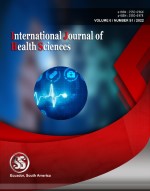Food spoilage alert system by deploying deep learning model
Keywords:
Food, DL, Cloud, Alert system, Train, TestAbstract
Food waste due to rotting is unquestionably an important resource issue that must be addressed as soon as possible in the next age. Recent technological advancements, such as cloud technology, Deep Learning (DL) may aid in the reduction of food waste. To address the rising issue of food spoilage in everyday situations in the most effective way possible, a DL model is built to distinguish between fresh and rotten fruit. The dataset required for this inquiry was obtained from Kaggle. The raw dataset is pre-processed so that it may be used with the DL model. Detection systems, controllers, and transmission elements make up the functional model. These modules interact with the items, such as the fruits, to collect data, which is then processed using a DL technique, such as CNN, and if there is any degradation in the food, an alert message is sent to the registered user.
Downloads
References
Dhanamjayulu C, Nizhal U, Maddikunta PKR, Gadekallu TR, Iwendi C, Wei C, et al. “Identification of malnutrition and prediction of BMI from facial images using real-time image processing and machine learning”. IET Image Proc, pp. 1–12, 2021
Sumitra Nuanmeesri, Lap Poomhiran, Kunalai Ploydanai, “Improving the Prediction of Rotten Fruit Using Convolutional Neural Network”, International Journal of Engineering Trends and Technology, vol. 69 Issue 7, pp. 51-55, 2021
N. Hebbar, "Freshness of Food Detection using IoT and Machine Learning," 2020 International Conference on Emerging Trends in Information Technology and Engineering (ic-ETITE), pp. 1-3, 2020
C. L. Batugal et al., "EyeSmell: Rice Spoilage Detection using Azure Custom Vision in Raspberry Pi 3," 2020 IEEE REGION 10 CONFERENCE (TENCON), pp. 738-743 2020
D. Mehta, T. Choudhury, S. Sehgal and T. Sarkar, "Fruit Quality Analysis using modern Computer Vision Methodologies," 2021 IEEE Madras Section Conference (MASCON), pp. 1-6, 2021
C. C. Foong, G. K. Meng and L. L. Tze, "Convolutional Neural Network based Rotten Fruit Detection using ResNet50," 2021 IEEE 12th Control and System Graduate Research Colloquium (ICSGRC), pp. 75-80, 2021
S. Chakraborty, F. M. J. M. Shamrat, M. M. Billah, M. A. Jubair, M. Alauddin and R. Ranjan, "Implementation of DL Methods to Identify Rotten Fruits," 2021 5th International Conference on Trends in Electronics and Informatics (ICOEI), pp. 1207-1212, 2021
https://www.kaggle.com/datasets/sriramr/fruits-fresh-and-rotten-for-classification
Alzubaidi, L., Zhang, J., Humaidi, A.J. et al. “Review of DL: concepts, CNN architectures, challenges, applications, future directions”. J Big Data, vol. 8, pp. 53, 2021.
Hossin, Mohammad & M.N, Sulaiman, “A Review on Evaluation Metrics for Data Classification Evaluations”, International Journal of Data Mining & Knowledge Management Process. vol. 5, pp. 01-11, 2015
Sharma, Shree Krishna, and Xianbin Wang. "Live data analytics with collaborative edge and cloud processing in wireless IoT networks." IEEE Access, vol. 5, pp. 4621-4635, 2017
Published
How to Cite
Issue
Section
Copyright (c) 2022 International journal of health sciences

This work is licensed under a Creative Commons Attribution-NonCommercial-NoDerivatives 4.0 International License.
Articles published in the International Journal of Health Sciences (IJHS) are available under Creative Commons Attribution Non-Commercial No Derivatives Licence (CC BY-NC-ND 4.0). Authors retain copyright in their work and grant IJHS right of first publication under CC BY-NC-ND 4.0. Users have the right to read, download, copy, distribute, print, search, or link to the full texts of articles in this journal, and to use them for any other lawful purpose.
Articles published in IJHS can be copied, communicated and shared in their published form for non-commercial purposes provided full attribution is given to the author and the journal. Authors are able to enter into separate, additional contractual arrangements for the non-exclusive distribution of the journal's published version of the work (e.g., post it to an institutional repository or publish it in a book), with an acknowledgment of its initial publication in this journal.
This copyright notice applies to articles published in IJHS volumes 4 onwards. Please read about the copyright notices for previous volumes under Journal History.
















